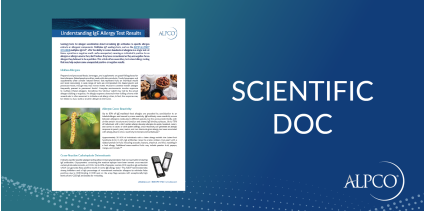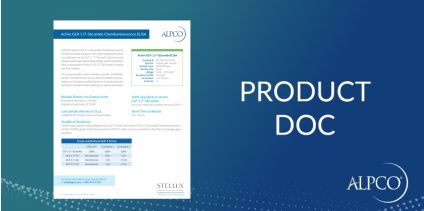Angiotensin I ELISA
$670.00
Catalog
74-AG1HU-E01
Angiotensin I ELISA is for the quantitative determination of Angiotensin I in serum, and plasma with results in 3.5 hours. Research Use Only. Not for Use in Diagnostic Procedures.
Regulatory Status
Research Use Only. Not for Use in Diagnostic Procedures.
Product Distribution
Available Worldwide
Range
0.1 - 500,000 pg/mL
Sensitivity
4.3 pg/mL
Sizes
96 Wells
Sample Types
Plasma, Serum
Inc Time Hour
3
Inc Time Minute
30
Inc Time Overnight
No
Inc Time See Protocol
No
Sample Size
500
Detection
Colorimetric
Angiotensins are small peptides derived from angiotensinogen.
Several of the known angiotensins are established endocrine
effectors in the regulation of blood pressure, but they are also
known to have other functions locally, in several organs and tis‐
sues (paracrine) and at the cellular level (autocrine / intra‐
crine) 1,2,3,4. Angiotensin I (DRVYIHPFHL) has no known effector
function but it is an immediate precursor of Angiotensin II
(DRVYIHPF). Angiotensin II binds AT1 receptors, which promote
vasoconstriction, sodium retention, release of aldosterone, release of Arg‐vasopressin, cell proliferation, inflammation, fibrosis, anxiety, and cardiac hypertrophy. Angiotensin A
(ARVYIHPF)5, and Angiotensin III (RVYIHPF), also bind AT1 re‐
ceptors. Angiotensin (1‐7) (DRVYIHP) binds a different receptor
called MAS‐1 which has opposite effects (vasodilation, natriure‐
sis, antiproliferation, NO release, PGE release, and apoptosis)6.
Angiotensin IV (VYIHPF) binds yet another receptor called AT4
(IRAP), which promotes increase of blood flow, angiogenesis,
and natriuresis, and which has also been implicated in memory
formation and in the pathogenesis of Alzheimer’s disease. The
peptide LVV‐hemorphin‐7 (LVVYPWTQRF), which is not an an‐
giotensin, also binds the AT4 receptor. There are other angiotensin peptides that have been identified, including Ang (1‐9) (DRVYIHPFH), Ang (1‐12) (DRVYIHPFHLVI), Ang V(3‐7) (VYIHP),
as well as several other shorter peptides that have undetermined functions.
Angiotensins can be present in very low concentrations in some
biological samples. In such cases, dilution of samples to avoid
“non‐specific” interference by any present factors is not productive because the angiotensin analyte is also diluted to levels far below the minimum detection concentration. Thus, investigators have used several procedures for extracting angiotensins from biological samples prior to using them for immunoassays.
See, for example: a) C18 extraction of Ang I and Ang II from
plasma, eluted with ACN:H2O:AcOH (74:24:4)7
; b) phenylsilylsilica cartridge extraction of Ang (1‐7) from blood, eluted with methanol8. Please see instructions for use for references.







